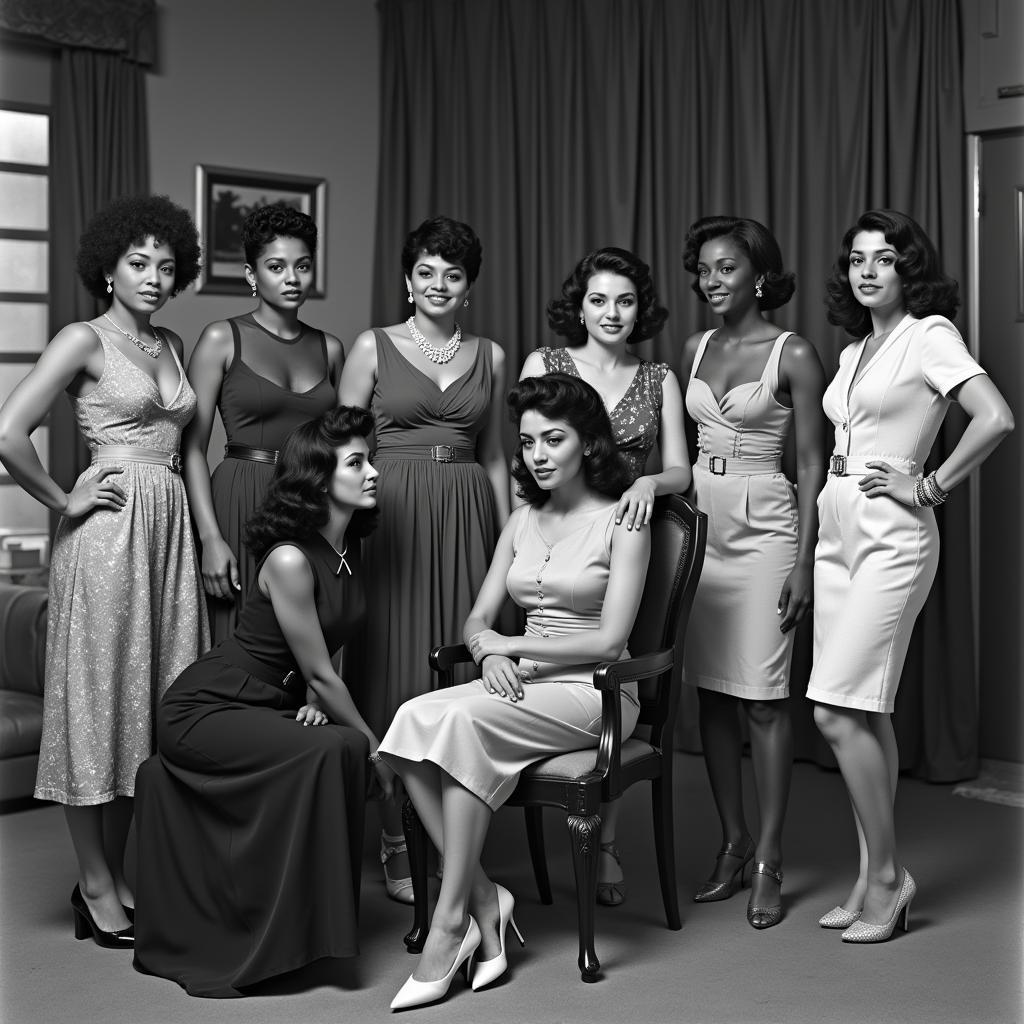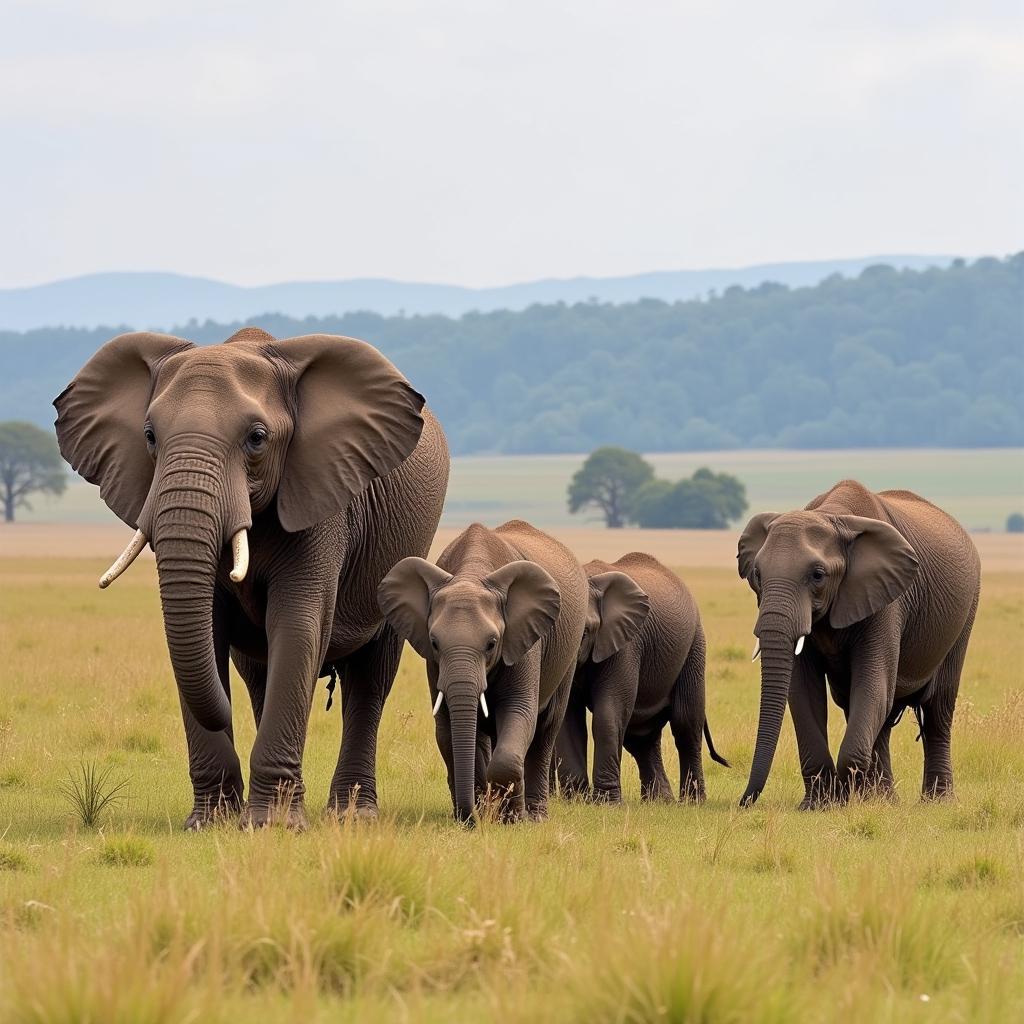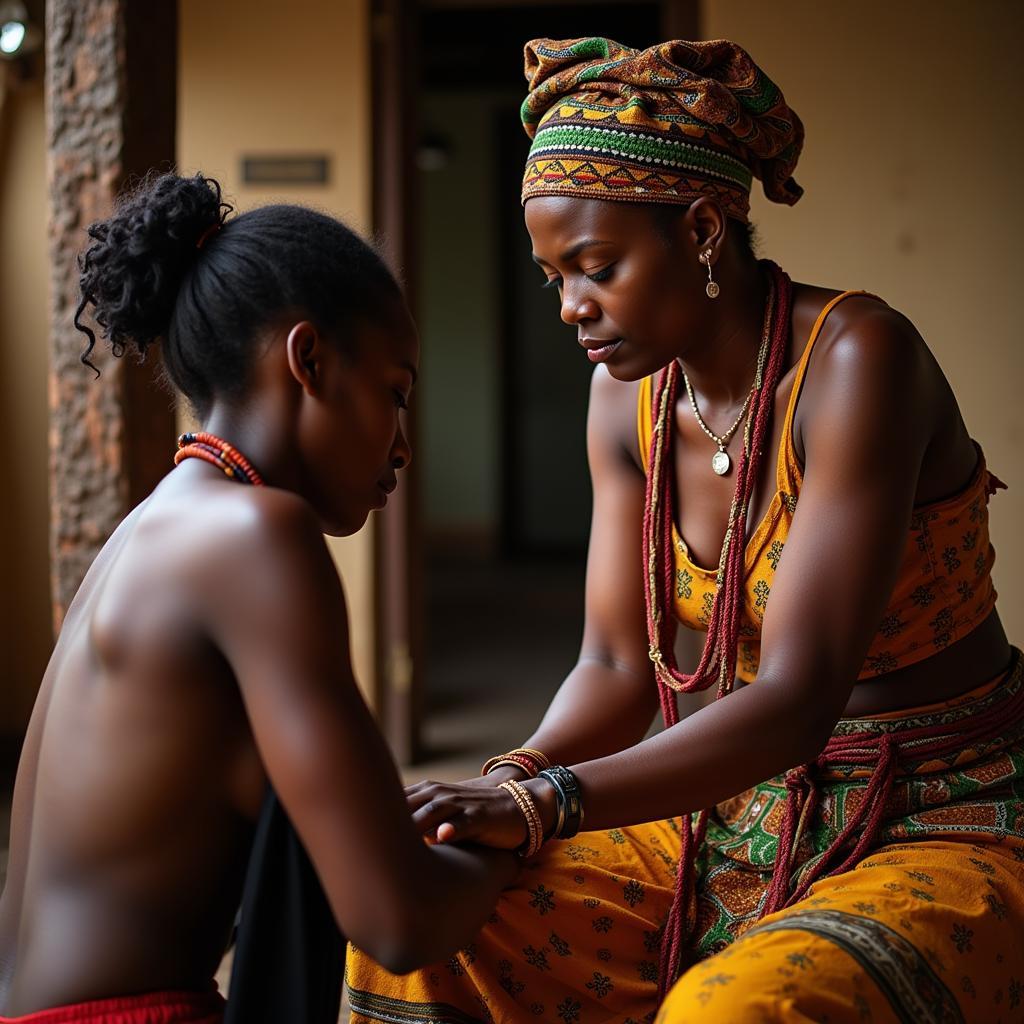The Joyful Rhythm of Life: Exploring African Baby Girl Dancing
From the dusty plains of the Serengeti to the bustling markets of Marrakech, dance is woven into the very fabric of African culture. It’s an expression of joy, a celebration of life, and a powerful form of storytelling passed down through generations. And nowhere is this more apparent than in the captivating movements of African Baby Girl Dancing.
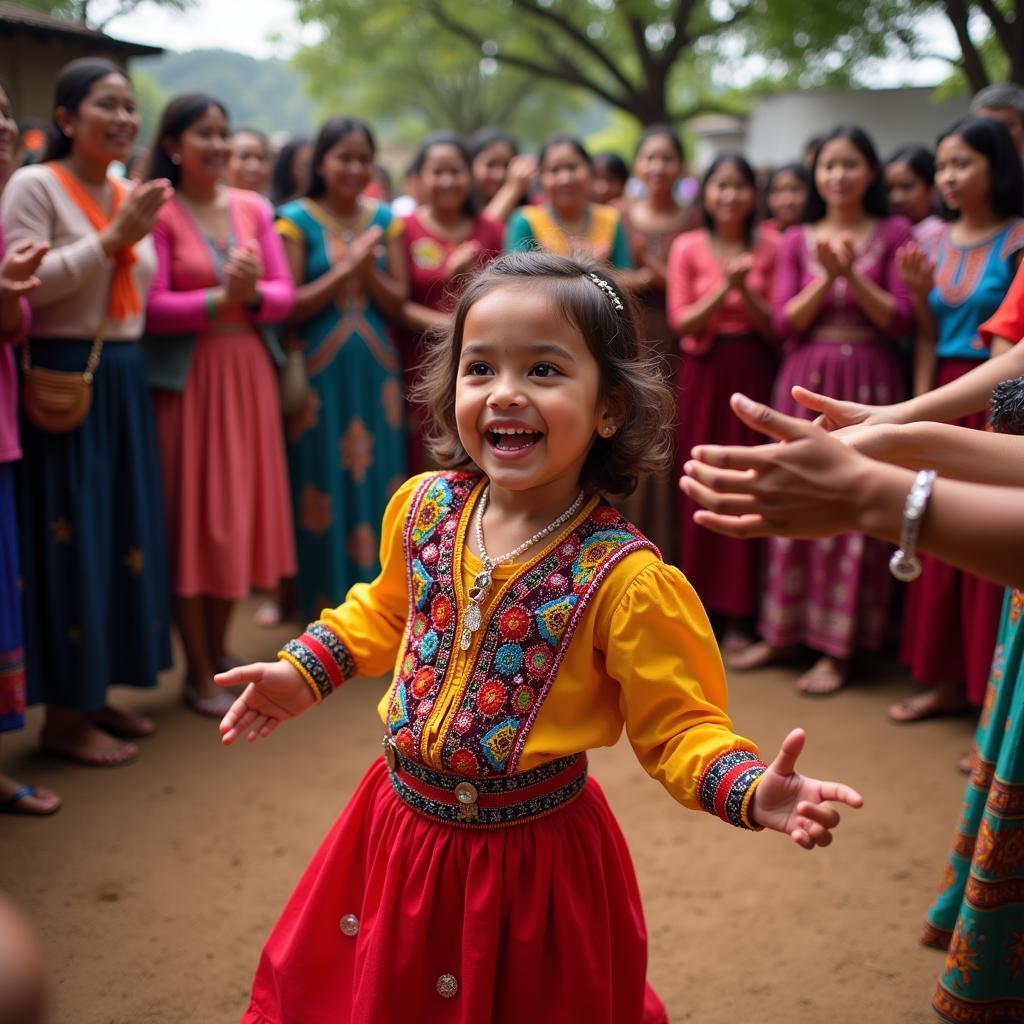 African baby girl dancing in traditional ceremony
African baby girl dancing in traditional ceremony
These tiny dancers, with their infectious smiles and uninhibited energy, embody the spirit of Africa. Their movements, though seemingly simple, carry deep cultural significance, reflecting the traditions and values of their communities.
The Significance of Dance in African Culture
In many African cultures, dance is not merely entertainment; it’s a way of life. It plays a vital role in rituals, ceremonies, and everyday activities. From birth celebrations to coming-of-age ceremonies, weddings, funerals, and harvests, dance marks important milestones and strengthens communal bonds.
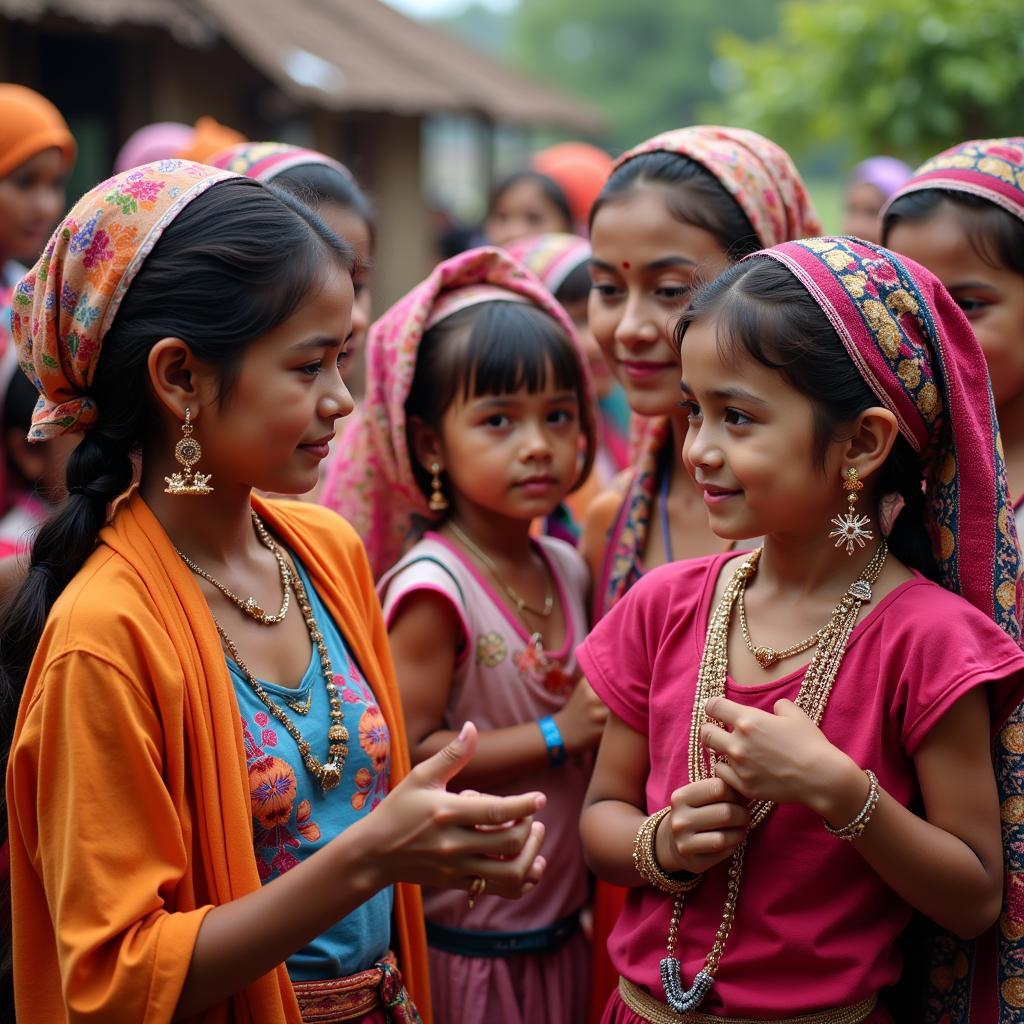 African women teaching young girls traditional dance moves
African women teaching young girls traditional dance moves
Children, even from a very young age, are encouraged to participate, absorbing the rhythms and steps as naturally as they learn to walk and talk. This early exposure to dance fosters a deep connection to their heritage and instills a sense of belonging within their communities.
The Beauty and Diversity of African Baby Girl Dancing
Across the vast continent of Africa, dance styles are as diverse as the people themselves. From the energetic Zulu Indlamu dance of South Africa to the graceful movements of the Guinean Yankadi dance, each region boasts its unique rhythms, costumes, and stories embedded within their dances.
For instance, in West Africa, you might witness a baby girl swaying to the infectious beats of the Djembe drum, her tiny feet mimicking the steps of her elders. In East Africa, she might be adorned with bells and beads, her movements echoing the elegance of the Maasai women performing their traditional jumping dance.
No matter the style, African baby girl dancing is a sight to behold. Their unadulterated joy, their natural rhythm, and their innocent expressions captivate the heart and offer a glimpse into the vibrant soul of Africa.
Preserving Tradition: The Importance of Passing Down the Dance
In an increasingly globalized world, preserving cultural traditions like dance is more important than ever. By teaching young girls these dances, communities ensure the continuity of their heritage, passing on not just steps but also values, stories, and a sense of identity.
Moreover, African baby girl dancing offers a powerful reminder of the universal language of dance. It transcends cultural boundaries, connecting people through shared emotions, rhythms, and the sheer joy of movement.
Conclusion: Celebrating the Joyful Rhythm of Life
African baby girl dancing is more than just adorable entertainment; it’s a testament to the power of culture, tradition, and the human spirit. These tiny dancers, with their infectious energy and captivating movements, offer a glimpse into the heart of Africa, reminding us of the importance of preserving cultural heritage and celebrating the joy of life through dance.
FAQs
1. What are some of the most popular African dances for young girls?
Many traditional African dances are accessible to young girls. Some popular choices include the South African Indlamu, the East African Maasai jumping dance, and various West African dances involving the Djembe drum.
2. Where can I learn more about African dance styles?
You can find a wealth of information online, including videos, documentaries, and articles. Additionally, local cultural centers and dance schools often offer classes and workshops on African dance.
3. Why is it important to preserve traditional dances like African baby girl dancing?
Preserving traditional dances ensures the continuity of cultural heritage. It’s about passing down values, stories, and a sense of identity to future generations.
4. How can I support the preservation of African dance traditions?
You can support by attending cultural events, taking classes, donating to organizations dedicated to cultural preservation, and spreading awareness about the beauty and importance of these traditions.
Ready to experience the vibrant world of African culture?
Explore more stories and insights on our website, including articles about african baby girl and african beauti sex.
Need assistance? Our dedicated team is available 24/7. Contact us via phone at +255768904061, email us at kaka.mag@gmail.com, or visit us at our office in Mbarali DC Mawindi, Kangaga, Tanzania.


